Traditional Art Forms: An Introduction To Fresco Painting
Welcome to the enchanting world of fresco painting, an art form that has captivated audiences for centuries! Imagine stepping into a grand cathedral or a historic building, and being greeted by vibrant murals that seem to leap off the walls. These stunning creations are not just beautiful; they are steeped in history and culture. Fresco painting, with its roots tracing back to ancient civilizations, is a unique technique that has transformed ordinary walls into extraordinary narratives. In this article, we will delve into the historical significance of fresco painting, the intricate techniques involved, and the cultural impact it has had throughout the ages. So, grab a seat and let’s explore how this age-old art form continues to inspire artists and enthusiasts alike!
Fresco painting boasts a rich and fascinating history that dates back to the ancient civilizations of the Mediterranean. The earliest examples can be found in the frescoes of the Minoan civilization on the island of Crete, where artists adorned palace walls with scenes of nature and daily life. As we journey through time, we see fresco painting evolve, playing a pivotal role in various cultures, from the Roman Empire to the Renaissance. During the Renaissance, fresco painting reached new heights, with artists like Michelangelo and Raphael creating masterpieces that still enchant viewers today. These works not only showcased technical skill but also reflected the cultural and spiritual beliefs of their time, making fresco painting a vital part of our artistic heritage.
To truly appreciate the beauty of fresco painting, one must understand the techniques that make it so unique. At its core, fresco painting involves applying pigments to freshly laid wet plaster. This method, known as buon fresco, allows the colors to bond with the plaster as it dries, creating a durable and vibrant finish. However, there is also the technique of fresco secco, where pigments are applied to dry plaster. While this method is easier and allows for more detailed work, it lacks the longevity of buon fresco. The choice between these two techniques can significantly influence the final outcome of the artwork.
Let's break down the differences between buon fresco and fresco secco. Each technique has its own unique characteristics and implications for the artist:
| Technique | Description | Durability |
|---|---|---|
| Buon Fresco | Painting on wet plaster, allowing pigments to bond as it dries. | Highly durable and long-lasting. |
| Fresco Secco | Painting on dry plaster, using a binding medium for pigments. | Less durable, prone to flaking over time. |
Creating a fresco masterpiece requires a specific set of materials. Artists typically use:
- Natural pigments: Derived from minerals, plants, and other organic materials.
- Plaster: A mixture of lime and sand, which serves as the canvas.
- Tools: Brushes, trowels, and sponges are essential for applying pigments and shaping the plaster.
These materials not only contribute to the artistry but also play a crucial role in the longevity and vibrancy of the finished work.
Throughout history, many artists have left their mark on the world of fresco painting. Michelangelo, for instance, is celebrated for his breathtaking work on the ceiling of the Sistine Chapel. His ability to convey human emotion and divine narratives through fresco is unparalleled. Similarly, Raphael created stunning frescoes that exemplified the beauty of the Renaissance. These artists not only mastered the techniques but also pushed the boundaries of creativity, inspiring countless others.
Fresco paintings often convey deep symbolic meanings, serving as visual storytelling that transcends time. Artists embed themes of spirituality, humanity, and nature within their works, inviting viewers to reflect on complex ideas. For instance, a fresco depicting a religious scene might symbolize hope and redemption, while a mural showcasing nature might represent the harmony between humanity and the earth. By using vibrant colors and intricate details, artists communicate profound messages that resonate with audiences on multiple levels.
Even in today’s fast-paced world, fresco painting remains relevant. Modern artists are reinterpreting traditional techniques, infusing them with contemporary themes and styles. This renewed interest in fresco painting not only honors its rich history but also showcases its adaptability. Artists are experimenting with materials and methods, creating works that challenge our perceptions and invite us to engage with the art form in new ways.
Preserving fresco paintings is crucial for maintaining our cultural heritage. Over time, these artworks face challenges such as environmental damage, neglect, and fading colors. Conservationists employ various methods to restore and protect these masterpieces, ensuring that future generations can appreciate their beauty. Techniques such as careful cleaning, stabilization of the plaster, and controlled environmental conditions are vital in this ongoing effort.
As interest in fresco painting grows, so do educational opportunities. Numerous workshops and courses are now available for aspiring artists to learn this traditional technique. These programs not only teach the fundamentals of fresco painting but also encourage creativity and personal expression. By fostering a new generation of fresco painters, we ensure that this ancient art form continues to thrive.
- What is fresco painting?
Fresco painting is a technique that involves applying pigments to wet plaster, allowing the colors to bond as the plaster dries. - What are the two main types of fresco painting?
The two primary techniques are buon fresco (on wet plaster) and fresco secco (on dry plaster). - Who are some famous fresco artists?
Notable fresco artists include Michelangelo, Raphael, and Giotto, each of whom made significant contributions to the art form. - How is fresco painting preserved?
Preservation involves careful cleaning, stabilization of the plaster, and maintaining controlled environmental conditions.
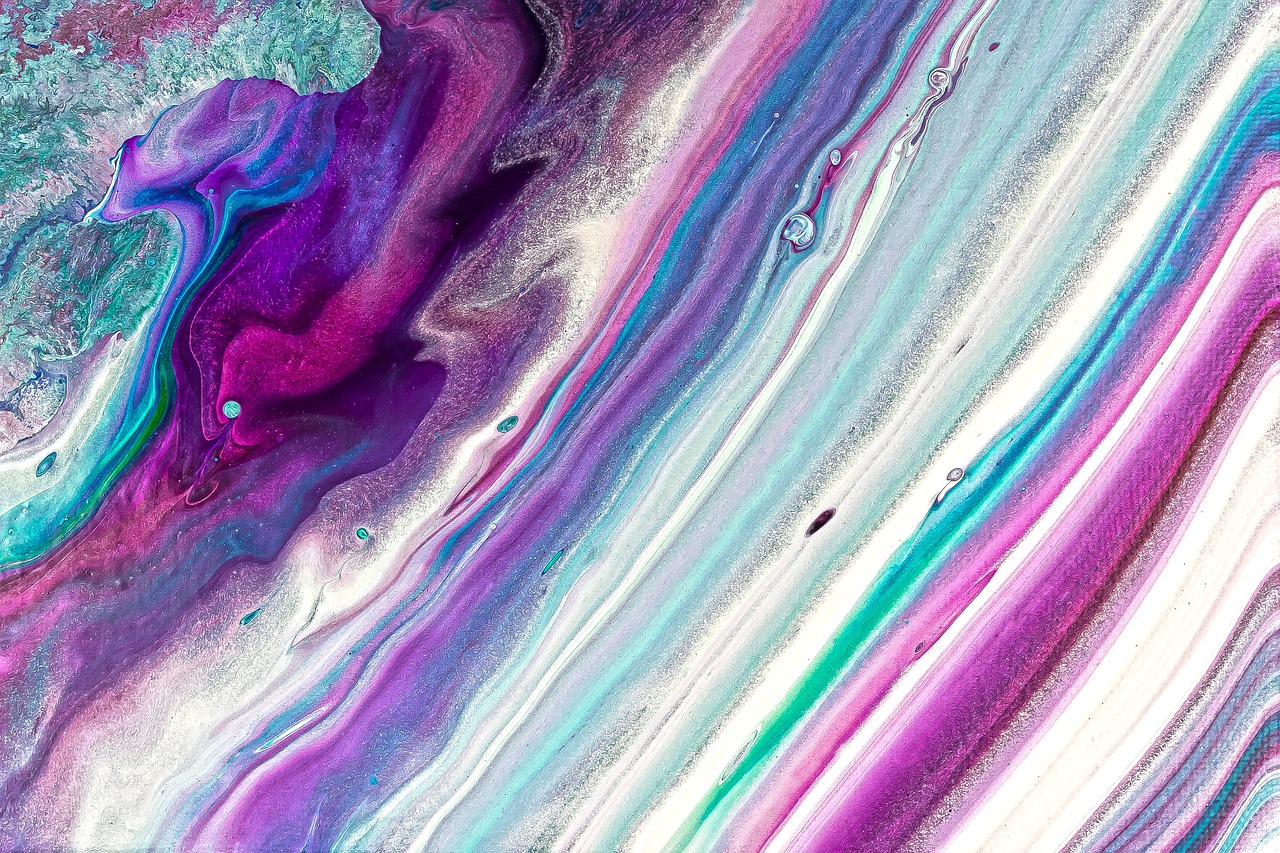
History of Fresco Painting
Fresco painting, a remarkable and ancient art form, has a history that stretches back to the dawn of civilization. Its origins can be traced to the prehistoric era, where early humans adorned the walls of caves with pigments derived from natural materials. These primitive artworks were not just for decoration; they held cultural significance, often depicting hunting scenes and spiritual symbols. As societies evolved, so did fresco painting, finding its place in the grand structures of ancient Egypt, Greece, and Rome.
By the time we reach the Renaissance period, fresco painting had transformed into a highly sophisticated technique. Artists like Giotto and Masaccio began to experiment with depth, perspective, and human emotion, paving the way for masters such as Michelangelo and Raphael. Their works in the Sistine Chapel and the Vatican are prime examples of how fresco painting became a medium for expressing religious narratives and humanist ideals. The vibrant colors and intricate details of these frescoes captivated audiences and set a standard for artistic excellence.
Fresco painting continued to flourish throughout the Baroque period, where artists like Caravaggio and Bernini incorporated dramatic lighting and emotional intensity into their works. However, as the Industrial Revolution ushered in new art forms and techniques, the popularity of fresco painting began to wane. Despite this decline, the 20th century saw a resurgence of interest in traditional methods, with contemporary artists revisiting fresco techniques to create modern masterpieces.
The history of fresco painting is not just a timeline of artistic evolution; it is a reflection of cultural shifts and societal values. Each era brought its own themes and messages, often tied to the prevailing religious beliefs, political climates, and social movements. For instance, during the Renaissance, the focus on humanism allowed artists to explore themes of nature, beauty, and the human experience, while the Baroque period's emphasis on emotion and drama mirrored the tumultuous times in which it thrived.
In summary, fresco painting has a rich and varied history that highlights the interplay between art and culture. From its humble beginnings to its zenith in the Renaissance, this art form has not only captured the beauty of its time but has also served as a historical record of human expression. Today, as we stand on the shoulders of giants, the legacy of fresco painting continues to inspire and influence artists around the globe.

Techniques Used in Fresco Painting
Fresco painting is not just about slapping some paint on a wall; it’s a meticulous process that intertwines artistry with craftsmanship. The techniques used in fresco painting are what make this ancient art form so captivating and enduring. At its core, fresco painting involves applying pigments to freshly laid wet plaster, a method that requires both skill and precision. The magic happens when the pigment bonds with the plaster as it dries, creating a vibrant and long-lasting image that can withstand the test of time.
One of the most fascinating aspects of fresco painting is the timing. Artists must work quickly, as they only have a limited window before the plaster sets. This urgency adds a layer of excitement to the process, almost like a race against time. Imagine being an artist, brush in hand, knowing that each stroke needs to be perfect, or else it could ruin the entire piece! This is where the concept of buon fresco comes into play, where colors are applied directly onto wet plaster. As the plaster dries, it becomes an integral part of the wall, making the artwork incredibly durable.
On the flip side, there's the technique known as fresco secco, where pigments are applied to dry plaster. While this method allows for more detailed work and corrections, it lacks the longevity of buon fresco. The colors can easily flake or fade over time, which is why many artists prefer the traditional method. Both techniques have their unique characteristics and applications, but understanding the difference is crucial for anyone interested in the world of fresco painting.
To truly appreciate the artistry of fresco painting, one must also consider the materials involved. The pigments used are often derived from natural sources, such as minerals and plants, giving each color a rich, organic quality. The plaster itself is typically made from lime, which not only provides a sturdy base but also reacts chemically with the pigments to create a lasting bond. Artists often mix their own pigments, a practice that requires knowledge of color theory and an understanding of how different materials interact.
In addition to the materials, the tools used in fresco painting are essential for achieving the desired effects. Brushes, trowels, and sponges all play a role in the application of colors and textures. The choice of tool can dramatically change the outcome of the artwork, making it a vital consideration for any fresco artist. It's like choosing the right instrument in a symphony; the final piece depends on how well each tool complements the others.
In summary, the techniques used in fresco painting are a blend of science, skill, and creativity. From the urgency of buon fresco to the flexibility of fresco secco, each method offers its own set of challenges and rewards. The materials and tools further enhance the complexity of this art form, making fresco painting a truly unique and captivating endeavor.
- What is the difference between buon fresco and fresco secco?
Buon fresco involves painting on wet plaster, while fresco secco is done on dry plaster. Buon fresco is more durable, while fresco secco allows for more detail. - What materials are used in fresco painting?
Fresco painting typically uses natural pigments, lime-based plaster, and various tools like brushes and trowels. - Can fresco paintings be restored?
Yes, fresco paintings can be restored, but it requires specialized techniques to preserve the original artwork. - Are there modern applications of fresco painting?
Yes, many contemporary artists are reinterpreting traditional fresco techniques, bringing new life to this ancient art form.
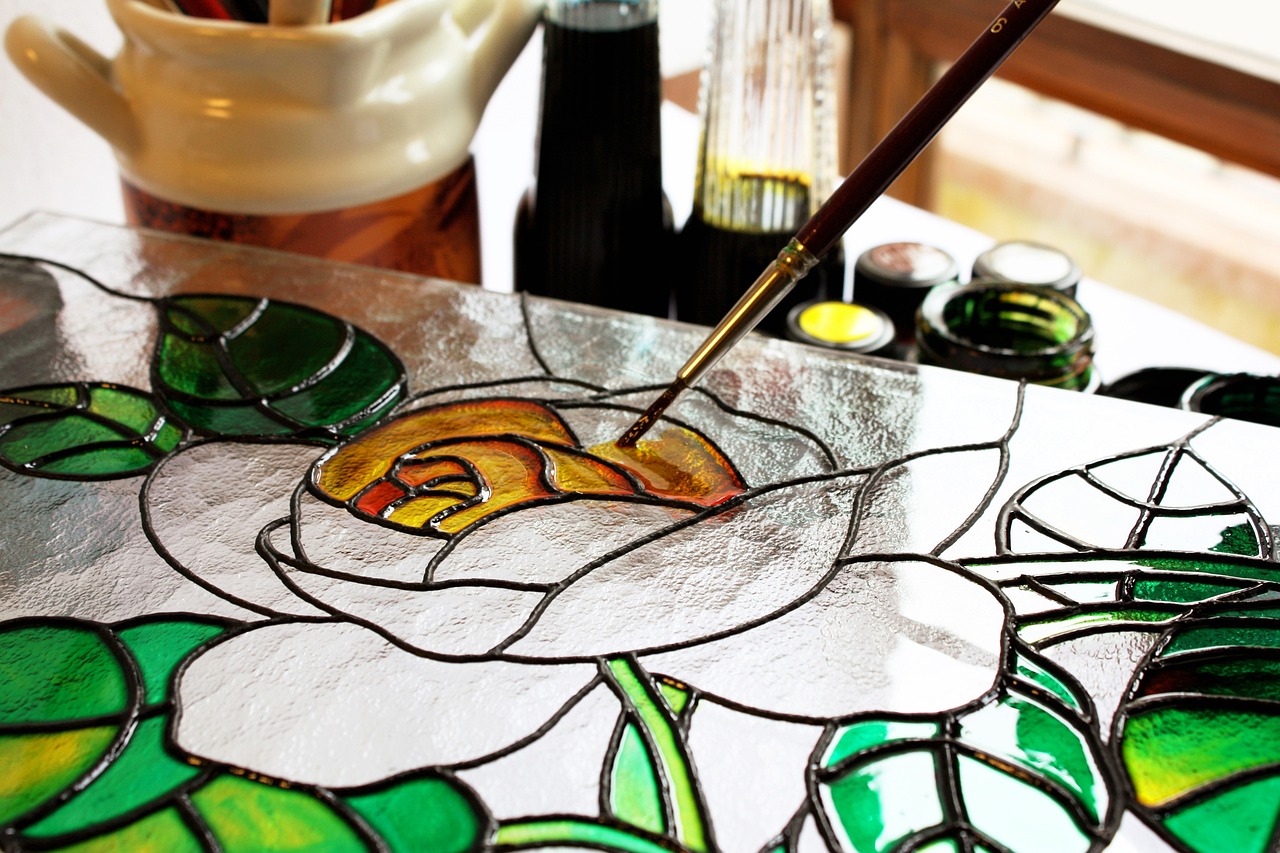
Buon Fresco vs. Fresco Secco
When diving into the world of fresco painting, one must understand the two primary techniques that define this ancient art form: buon fresco and fresco secco. Each method has its own unique characteristics, advantages, and challenges, which contribute to the overall beauty and longevity of the artwork. Let's unpack these two techniques and see how they differ.
Buon fresco, or "true fresco," is a technique where pigments mixed with water are applied directly onto freshly laid wet plaster. This method is akin to planting seeds in fertile soil; the pigments bond with the plaster as it dries, creating a durable and vibrant finish. Because the painting must be completed before the plaster dries, artists often work quickly and with precision. This technique is celebrated for its rich colors and the way it allows the artwork to age gracefully, as the pigments become an integral part of the wall itself. However, this also means that any mistakes can be quite challenging to correct, making it a test of skill and planning.
On the other hand, fresco secco translates to "dry fresco." In this method, artists paint on dry plaster, using a binding medium to adhere the pigments. This approach provides more flexibility, as artists can take their time to refine details and correct mistakes. It’s somewhat like painting on a canvas; the artist has the luxury of layering colors and textures without the pressure of working against drying plaster. However, the downside is that fresco secco tends to be less durable than buon fresco. Over time, the paint can flake or fade, as it does not bond with the plaster in the same way.
| Technique | Characteristics | Durability | Flexibility |
|---|---|---|---|
| Buon Fresco | Paint applied to wet plaster | Highly durable; colors age beautifully | Less flexible; must work quickly |
| Fresco Secco | Paint applied to dry plaster | Less durable; prone to flaking | More flexible; allows for corrections |
In summary, the choice between buon fresco and fresco secco often depends on the artist's intent and the specific project at hand. Both techniques offer unique advantages and challenges, and understanding these differences can greatly enhance one's appreciation of fresco paintings. Whether an artist chooses the vibrant permanence of buon fresco or the flexible approach of fresco secco, each method contributes to the rich tapestry of this enduring art form.
- What is the main difference between buon fresco and fresco secco?
Buon fresco involves painting on wet plaster, while fresco secco is done on dry plaster. - Which technique is more durable?
Buon fresco is generally more durable as the pigments bond with the plaster. - Can mistakes be corrected in fresco painting?
In fresco secco, mistakes can be corrected more easily than in buon fresco, where errors can be difficult to fix. - What materials are used in fresco painting?
Artists typically use natural pigments, lime-based plaster, and various tools for application.
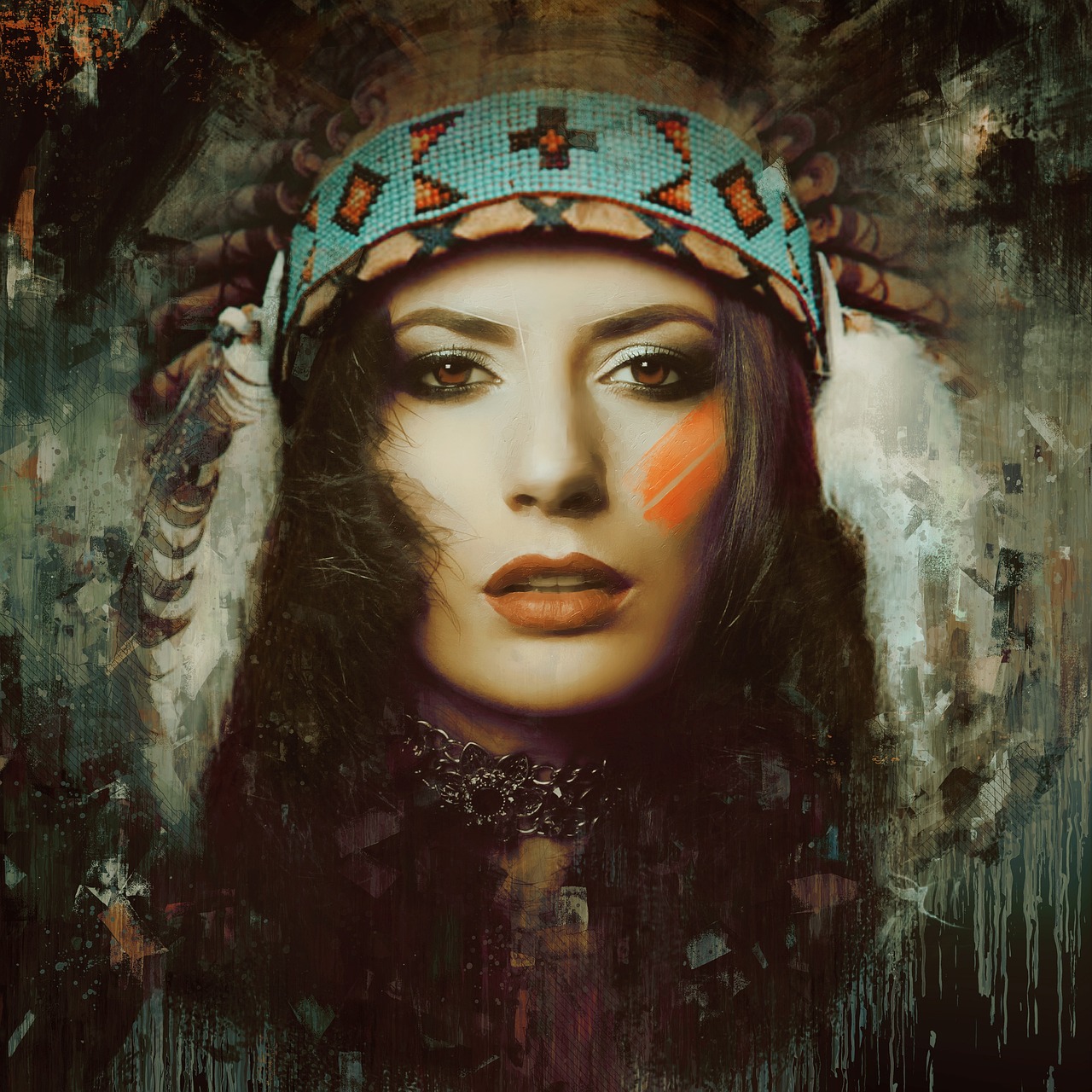
Materials Required for Fresco Painting
When it comes to fresco painting, the materials used are just as important as the techniques. Think of it as a chef needing the right ingredients to whip up a culinary masterpiece; without the right tools and materials, even the most skilled artist would struggle to create a stunning fresco. The primary materials involved in fresco painting include pigments, plaster, and various tools.
The base of any fresco is the plaster, which is typically made from a mixture of lime and sand. This combination creates a durable surface that can withstand the test of time. When artists apply their pigments onto wet plaster, they are essentially embedding their colors into the wall itself. This technique not only enhances the vibrancy of the colors but also ensures that the artwork becomes a part of the wall, much like a tree rooted deeply in the soil.
Now, let’s dive deeper into the pigments. Fresco artists often use natural pigments derived from minerals and plants, which provide a range of colors that are both rich and lasting. For example, ochres can produce yellows and browns, while azurite can yield stunning blues. These pigments are mixed with water to create a paste, which is then applied to the wet plaster. The choice of pigments is crucial, as they not only affect the aesthetic appeal of the fresco but also its longevity.
In addition to plaster and pigments, artists require specific tools to apply their materials effectively. Brushes of various sizes, sponges, and even their hands can be used to manipulate the wet plaster and pigments. Each tool serves a distinct purpose; for instance, larger brushes might be employed for broad strokes, while finer brushes allow for intricate details. The artist's choice of tools can significantly influence the final outcome, much like a musician selecting the right instrument to convey their melody.
| Material | Description |
|---|---|
| Plaster | A mixture of lime and sand, providing a durable surface for painting. |
| Pigments | Natural colors derived from minerals and plants, mixed with water to create paint. |
| Tools | Brushes, sponges, and other implements used to apply pigments to plaster. |
Understanding these materials not only enhances our appreciation for fresco painting but also invites us to consider the artistry and craftsmanship involved in this ancient form. Each element plays a vital role in the creation of a fresco, and together they form a symbiotic relationship that brings these vibrant artworks to life.
- What is the difference between buon fresco and fresco secco? Buon fresco involves painting on wet plaster, allowing the colors to bond with the plaster as it dries, while fresco secco is done on dry plaster, where the paint sits on the surface.
- How long does a fresco last? With proper care and preservation, frescoes can last for centuries, as the colors become part of the wall itself.
- Can anyone learn fresco painting? Yes! Many workshops and courses are available for those interested in learning this traditional technique.
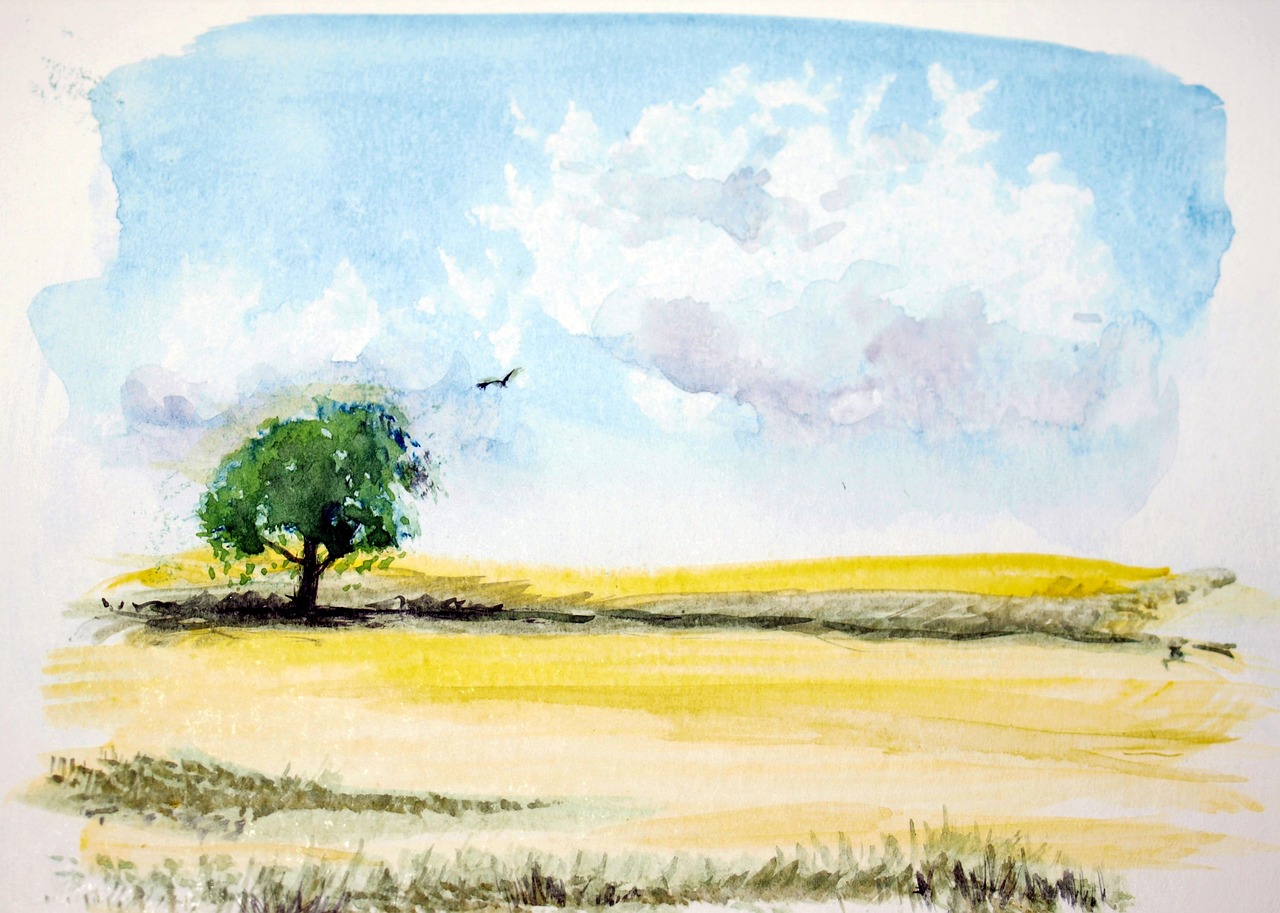
Famous Fresco Artists
When we think about the captivating world of fresco painting, a few names emerge that have left an indelible mark on this art form. These artists not only mastered the technique but also elevated fresco painting to new heights, turning walls into canvases of storytelling and emotion. Michelangelo, for instance, is often hailed as one of the greatest artists of all time, and his work on the Sistine Chapel is a testament to his genius. Imagine lying on your back, staring up at a ceiling that tells stories from the Bible, where every brushstroke breathes life into the characters and scenes. This was no small feat; Michelangelo painted over 5,000 square feet of frescoes, demonstrating not just skill but an incredible vision.
Another luminary in the realm of fresco painting is Raphael. His frescoes in the Vatican, particularly the School of Athens, are masterpieces that showcase a harmonious blend of philosophy and art. Raphael had a unique ability to capture human emotion and interaction, making his figures appear almost alive. When you look at his work, you can feel the conversations buzzing among the philosophers depicted, as if they are inviting you into their world. It’s fascinating to think about how these artists, through their frescoes, sought to engage viewers in profound dialogues about life, knowledge, and spirituality.
Let's not forget Giotto di Bondone, who is often credited with pioneering the use of fresco in the early Renaissance. His works, like those found in the Scrovegni Chapel, broke away from the flat, two-dimensional representations of the past, introducing depth and emotion that resonated with viewers. Giotto's innovative approach laid the groundwork for future artists, blending realism with divine themes. His frescoes are not just paintings; they are windows into a world where the sacred meets the human experience.
In addition to these iconic figures, there are many contemporary artists who are keeping the tradition alive. Today, fresco painting workshops are popping up around the globe, inviting a new generation to explore this ancient technique. Artists like Ben Long and Jill Hooper are revitalizing fresco painting, experimenting with modern themes while respecting the traditional methods. They are proof that fresco painting is not just a relic of the past but a vibrant and evolving art form.
To summarize the contributions of these famous fresco artists, here’s a quick look:
| Artist | Notable Work | Contribution |
|---|---|---|
| Michelangelo | Sistine Chapel | Transformed fresco painting with dramatic narratives and scale. |
| Raphael | School of Athens | Blended human emotion and interaction in religious themes. |
| Giotto di Bondone | Scrovegni Chapel | Introduced depth and realism, paving the way for Renaissance art. |
| Ben Long | Various Contemporary Works | Revitalizes fresco with modern themes and techniques. |
| Jill Hooper | Various Contemporary Works | Combines traditional methods with contemporary subjects. |
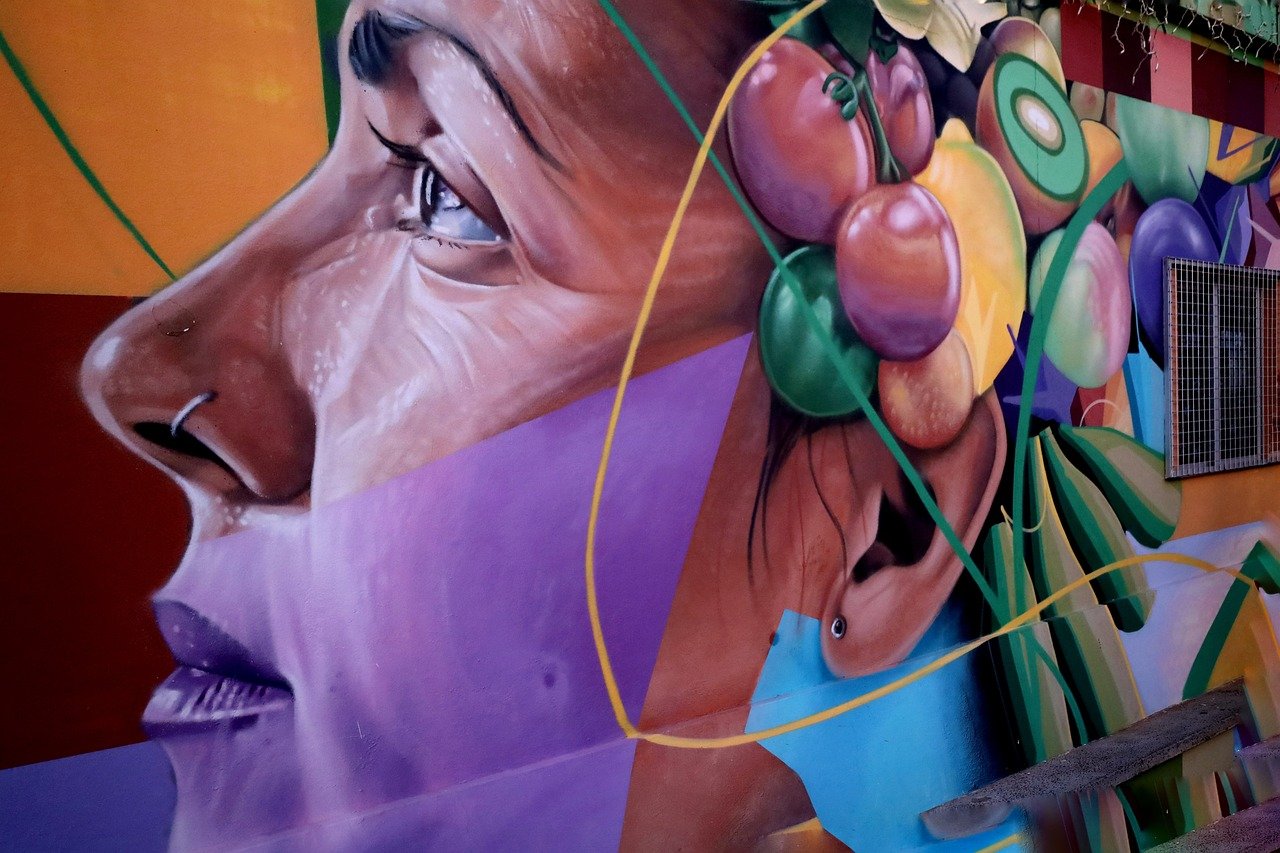
Symbolism in Fresco Art
Fresco painting is not just about vibrant colors and stunning visuals; it is a profound language of symbolism that artists have used to convey complex ideas and emotions throughout history. Each brushstroke, each hue, carries meaning that transcends mere aesthetics. For instance, the use of certain colors often symbolizes specific themes—blue might represent divinity, while red could evoke passion or sacrifice. This rich tapestry of meaning invites viewers to delve deeper into the artwork, prompting questions about the narratives and emotions that lie beneath the surface.
One of the most captivating aspects of fresco symbolism is its ability to tell stories that resonate across cultures and eras. Artists like Michelangelo and Raphael were masters at embedding layers of meaning into their works, using figures and scenes that were often steeped in religious or mythological significance. For example, in the Sistine Chapel, Michelangelo's depiction of the Creation of Adam is not merely a biblical reference; it symbolizes the connection between humanity and the divine, illustrating the moment when God imparts life to Adam with a touch. Such powerful imagery encourages viewers to reflect on their own existence and relationship with the universe.
Moreover, the themes explored in fresco art often reflect the societal values and beliefs of the time. In many Renaissance frescoes, the interplay of light and shadow can symbolize the struggle between good and evil, while the positioning of figures might convey social hierarchies or moral lessons. The use of allegory is another common technique, where characters and scenes represent broader concepts such as justice, wisdom, or love. This method not only enriches the narrative but also invites viewers to engage with the artwork on a more intellectual level, considering the broader implications of the depicted scenes.
To better understand the symbolism in fresco art, here are some common themes and their meanings:
- Divinity: Often depicted through the use of light and celestial imagery, symbolizing the presence of the divine in everyday life.
- Humanity: Figures representing human emotion and experience, often shown in contrasting states of joy and sorrow.
- Nature: Elements of nature, such as flowers or landscapes, symbolizing growth, change, and the cycle of life.
- Mythology: Incorporating mythological figures to convey moral lessons or cultural narratives.
As we explore fresco art, it becomes clear that the symbolism woven into these works is a testament to the artists' desire to communicate profound truths about the human experience. The ability to convey such layered meanings through visual storytelling is what makes fresco painting a timeless and enduring form of art. It invites us not only to appreciate the beauty of the artwork but also to engage with the deeper messages that resonate within it, challenging us to think critically about our own lives and the world around us.
1. What is the main purpose of symbolism in fresco art?
The primary purpose of symbolism in fresco art is to convey complex ideas, emotions, and narratives that resonate with viewers on multiple levels. It allows artists to communicate deeper meanings beyond the visual representation.
2. How do colors influence the symbolism in fresco paintings?
Colors play a crucial role in symbolism; different colors can evoke specific emotions or represent various themes. For example, blue often symbolizes divinity, while red may represent passion or sacrifice.
3. Can fresco art be interpreted differently by different viewers?
Absolutely! The beauty of fresco art lies in its ability to evoke varied interpretations. Personal experiences, cultural backgrounds, and individual perspectives can all influence how one perceives the symbolism within a fresco.
4. Are there modern artists who use symbolism in their frescoes?
Yes, many contemporary artists draw inspiration from traditional fresco techniques and incorporate symbolism into their works, often reinterpreting ancient themes to address modern issues.
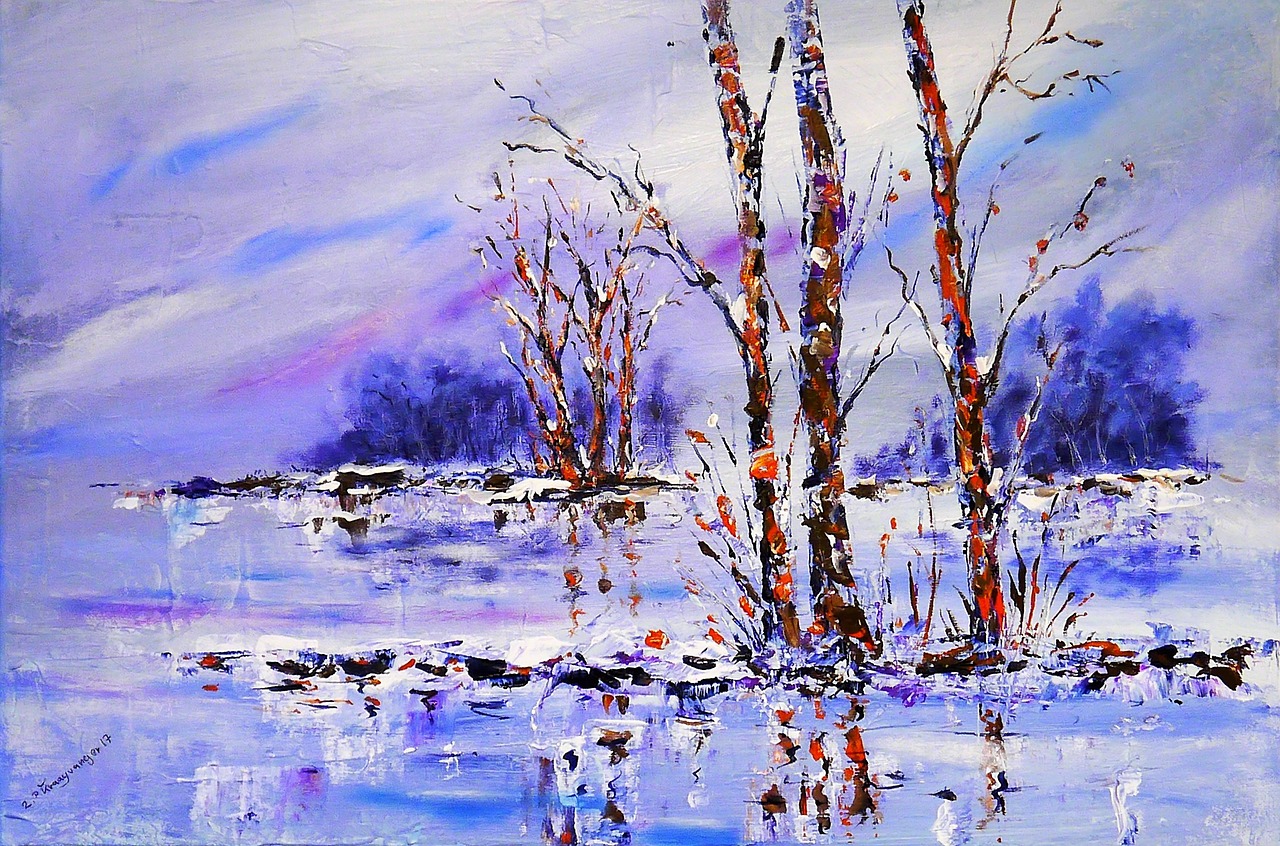
Fresco Painting in Modern Times
Fresco painting, while steeped in history, is not merely a relic of the past; it has found a vibrant place in the contemporary art scene. Artists today are reinterpreting this ancient technique, blending it with modern themes and styles. Imagine walking into a gallery and being greeted by a stunning fresco that tells a story of today, using methods that date back thousands of years. This fusion of old and new breathes life into fresco painting, making it relevant and exciting for modern audiences.
One of the most fascinating aspects of modern fresco painting is the way artists adapt traditional techniques to express contemporary issues. For instance, artists are increasingly using frescoes to make statements about social justice, environmental concerns, and cultural identity. This approach not only honors the past but also engages viewers in a dialogue about the present and future. It’s like taking a classic novel and rewriting it with a modern twist—same core, new perspective.
Moreover, the resurgence of interest in fresco painting can be seen in various urban spaces, where murals and public art projects are revitalizing communities. Cities around the world are embracing this art form, commissioning artists to create large-scale frescoes that reflect local culture and history. These projects not only beautify public spaces but also foster community pride and engagement. For instance, a community mural might depict significant local events or figures, serving as a visual history lesson for residents and visitors alike.
As technology evolves, so too do the materials and methods available to artists. While traditional fresco painting relies on natural pigments and lime plaster, modern artists are experimenting with new materials that can enhance durability and vibrancy. This innovation allows for frescos that can withstand the test of time while still maintaining the authenticity of the original technique. It’s like upgrading your classic car with modern technology while keeping its vintage charm intact.
In addition to individual artists, educational institutions are recognizing the importance of fresco painting in art education. Workshops and courses are popping up, teaching aspiring artists the intricacies of this technique. These opportunities are crucial for preserving the craft and ensuring that new generations of artists can carry the torch forward. Just as a master chef passes down recipes, experienced fresco artists are sharing their knowledge, ensuring that this beautiful art form continues to thrive.
In summary, fresco painting is experiencing a renaissance in modern times. Through innovative approaches, community involvement, and educational initiatives, this ancient art form is not only surviving but flourishing. It serves as a reminder that art is a living entity, continuously evolving while still honoring its roots.
- What is fresco painting? Fresco painting is a technique that involves applying pigment to wet plaster, allowing the paint to become an integral part of the wall surface as it dries.
- Why is fresco painting important? Fresco painting is significant for its historical value and its ability to convey cultural narratives through visual storytelling.
- Can anyone learn fresco painting? Yes! Many workshops and courses are available for beginners interested in learning this traditional art form.
- Are modern frescoes different from traditional ones? While the foundational techniques remain the same, modern artists often use new materials and themes to make their work relevant to contemporary audiences.
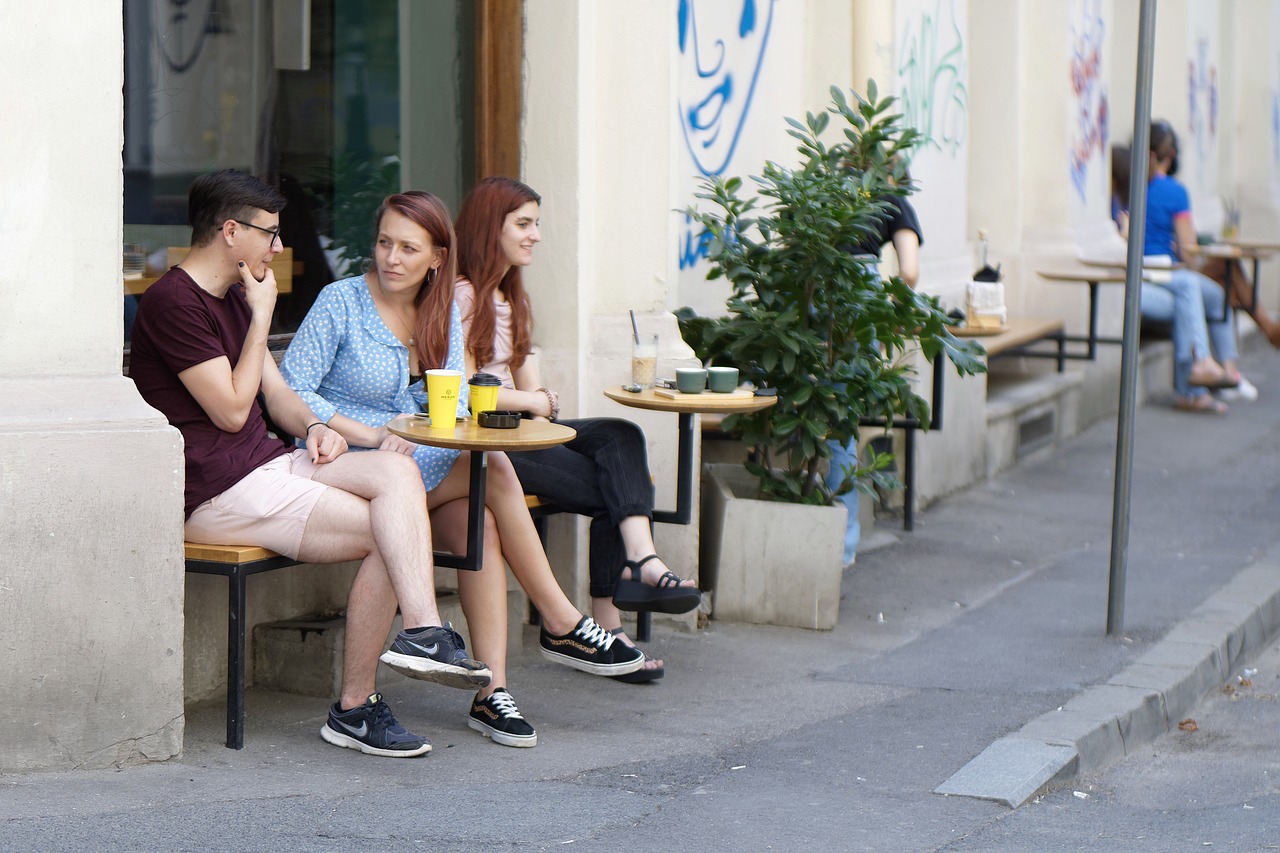
Preservation of Fresco Works
Preserving fresco paintings is a task that demands both expertise and dedication. These magnificent works of art, often adorning the walls of ancient churches and palaces, are not only visually stunning but also hold immense cultural significance. As time marches on, frescoes face numerous threats, including environmental factors, pollution, and human activities. Therefore, the need for effective preservation techniques has never been more crucial.
The preservation of fresco works involves a combination of preventive measures and active restoration efforts. Preventive measures include controlling the environment where the fresco is displayed. This means maintaining stable humidity levels and temperatures to prevent moisture damage. For instance, the use of climate control systems in museums and galleries can significantly prolong the life of frescoes. Additionally, protecting the artworks from direct sunlight and air pollution is vital, as these factors can cause fading and deterioration over time.
When it comes to restoration, experts often employ a variety of techniques. Cleaning is usually the first step, where conservators carefully remove dirt and grime without damaging the original paint. This process requires immense skill, as even the slightest mistake can lead to irreversible damage. Reinforcement of the plaster is another common technique, ensuring that the structural integrity of the fresco is maintained. In some cases, inpainting may be used to fill in areas that have been lost, but this is done with utmost caution to ensure that the original artist's intent is respected.
One of the significant challenges in fresco preservation is the balance between restoration and authenticity. While it may be tempting to restore a fresco to its original glory, conservators must tread carefully to avoid altering the artwork's historical value. This delicate balance often leads to heated debates among art historians and conservators. The goal is to ensure that future generations can appreciate these masterpieces in their true form, without compromising their authenticity.
In recent years, advancements in technology have opened up new avenues for fresco preservation. Techniques such as 3D scanning and digital documentation allow for detailed records of frescoes, which can be invaluable for restoration efforts. Moreover, the use of non-invasive materials for restoration is becoming more common, providing a way to repair without causing further damage. These innovations not only enhance preservation efforts but also ensure that the artistry of fresco painting continues to inspire future generations.
Overall, the preservation of fresco works is a complex yet rewarding endeavor. It requires a deep understanding of both the art form and the materials involved, as well as a commitment to maintaining the cultural heritage that these artworks represent. As we continue to explore and appreciate the beauty of fresco paintings, let us also recognize the importance of preserving them for the enjoyment of many generations to come.
- What is the most common threat to fresco paintings? - Environmental factors such as humidity, pollution, and sunlight are the primary threats.
- How do conservators clean frescoes? - Conservators use specialized tools and techniques to carefully remove dirt without harming the original paint.
- Can frescoes be restored? - Yes, but restoration must be done with caution to maintain the artwork's authenticity.
- What role does technology play in fresco preservation? - Technology aids in documentation and offers new methods for non-invasive restoration.
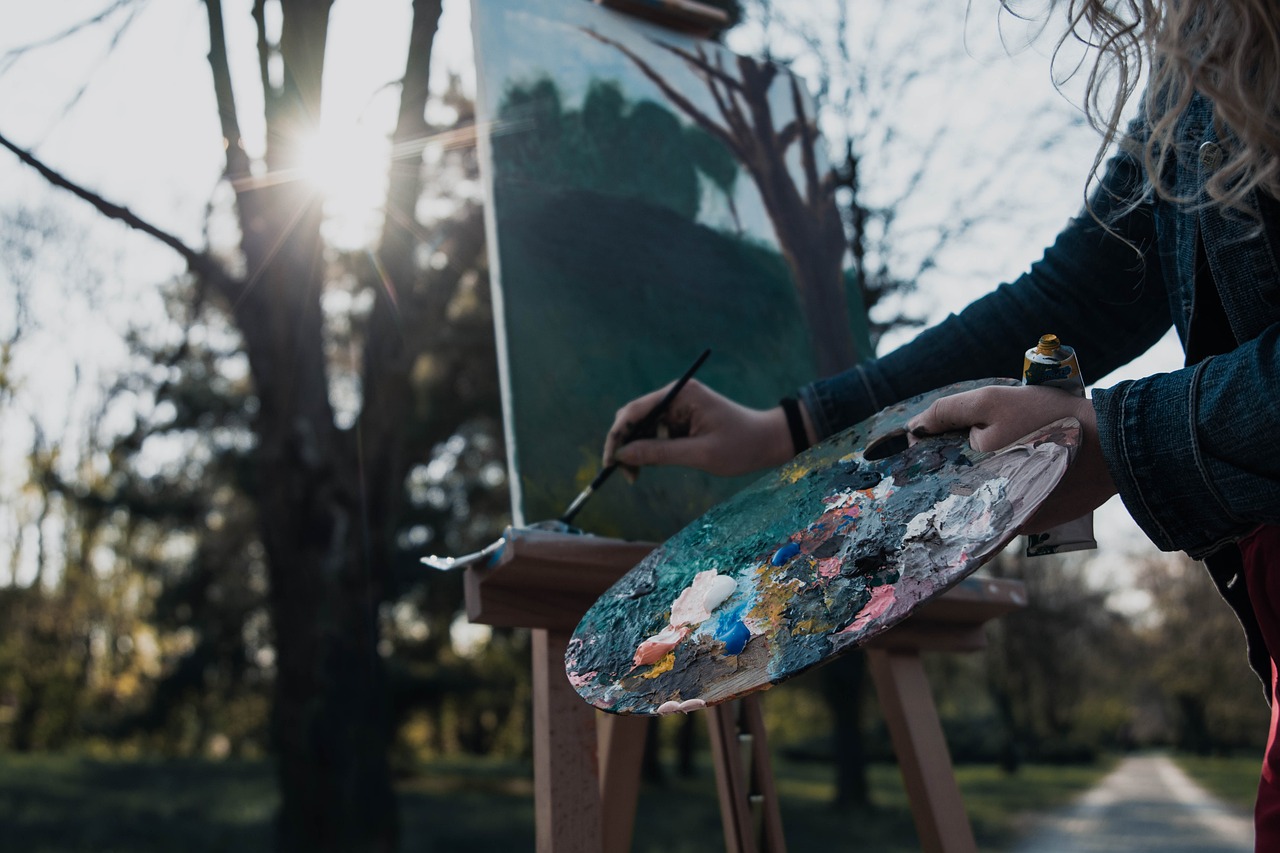
Fresco Painting Workshops and Education
In today's fast-paced digital world, the allure of traditional art forms like fresco painting continues to captivate many. If you've ever dreamed of picking up a brush and diving into this ancient technique, you're in luck! Numerous fresco painting workshops and educational programs are popping up around the globe, designed to cater to both beginners and seasoned artists alike. These workshops not only teach the techniques involved but also immerse participants in the rich history and culture that fresco painting embodies.
Imagine standing in a sunlit studio, surrounded by the smell of fresh plaster and vibrant pigments, as you learn the delicate art of applying paint to wet plaster. Many workshops offer hands-on experiences where you can create your own frescoes under the guidance of skilled instructors. This practical approach is essential because, unlike other painting techniques, fresco requires a unique understanding of how pigments interact with the plaster as it dries. It's a race against time, and the thrill of working against the clock adds an exhilarating element to the learning experience.
Workshops vary in duration, from weekend retreats to week-long intensive courses. Here are some common features you might encounter:
- Expert Instruction: Most workshops are led by experienced fresco artists who share their insights and techniques.
- Materials Provided: Participants usually receive all necessary materials, including pigments, tools, and plaster.
- Collaborative Environment: Many workshops encourage teamwork, allowing participants to learn from each other and share ideas.
For those who prefer a more structured approach, several art schools and universities offer formal courses in fresco painting. These programs often delve deeper into the historical context, materials science, and preservation techniques associated with fresco art. Enrolling in a formal program can provide a comprehensive understanding of the medium, preparing students for potential careers in art restoration or teaching.
As you explore these opportunities, consider the following factors:
| Factor | Considerations |
|---|---|
| Location | Choose a workshop that is accessible and offers a comfortable learning environment. |
| Instructor Experience | Research the background of the instructors to ensure they have a solid foundation in fresco techniques. |
| Cost | Evaluate the price in relation to what is offered, including materials and duration of the workshop. |
| Reviews | Look for testimonials from past participants to gauge the quality of the workshop. |
In conclusion, fresco painting workshops and educational programs are excellent avenues for anyone looking to connect with this timeless art form. Whether you're a novice eager to learn or an experienced artist seeking to refine your skills, these opportunities can provide invaluable insights into the world of fresco painting. So why not take the plunge? Grab your brushes, and let the beauty of fresco art unfold before you!
- What is fresco painting? Fresco painting is a technique where pigments are applied to wet plaster, allowing the paint to become an integral part of the wall surface.
- Can anyone join a fresco painting workshop? Yes! Most workshops are designed for all skill levels, from beginners to advanced artists.
- How long does it take to learn fresco painting? While you can grasp the basics in a weekend workshop, mastering the technique may take years of practice.
- Are materials included in workshops? Typically, yes! Most workshops provide all necessary materials for participants.
Frequently Asked Questions
-
What is fresco painting?
Fresco painting is a technique where artists apply water-based pigments onto freshly laid wet plaster. As the plaster dries, the colors become an integral part of the wall, creating a durable and vibrant artwork that can last for centuries.
-
How did fresco painting originate?
The origins of fresco painting can be traced back to ancient civilizations such as the Egyptians and Greeks. It evolved over time, gaining prominence during the Renaissance when artists like Michelangelo and Raphael used it to create stunning masterpieces.
-
What is the difference between buon fresco and fresco secco?
Buon fresco involves painting on wet plaster, allowing the pigments to bond with the wall as it dries. In contrast, fresco secco is done on dry plaster, where the pigments sit on the surface. Buon fresco is generally more durable, while fresco secco is easier for artists to work with but less long-lasting.
-
What materials are needed for fresco painting?
Key materials for fresco painting include high-quality pigments, lime-based plaster, and various tools such as brushes and sponges. The choice of materials is crucial for achieving the desired effects and ensuring the longevity of the artwork.
-
Who are some famous fresco artists?
Some of the most renowned fresco artists include Michelangelo, known for the Sistine Chapel ceiling, and Raphael, famous for his frescoes in the Vatican. Their works have significantly influenced the art world and continue to inspire artists today.
-
What themes are commonly found in fresco paintings?
Fresco paintings often explore themes such as mythology, religion, and human emotion. Artists use symbolism and visual storytelling to convey complex ideas, making each piece a rich tapestry of meaning.
-
Is fresco painting still relevant today?
Absolutely! Many contemporary artists are reviving traditional fresco techniques, blending them with modern styles. This resurgence highlights the timeless appeal of fresco painting and its adaptability in the ever-evolving art landscape.
-
How are fresco artworks preserved?
Preserving fresco paintings involves a combination of careful restoration techniques and environmental controls. Challenges such as moisture and pollution must be managed to ensure these cultural treasures remain intact for future generations.
-
Are there workshops available for learning fresco painting?
Yes! There are numerous workshops and courses available for aspiring artists interested in fresco painting. These educational opportunities allow individuals to learn from experienced artists and develop their skills in this traditional technique.



















